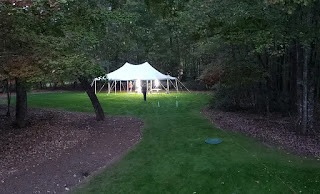Tip
If you looking to contain these plants, I have some bad news. Pruning will not control meandering Liriope. Only digging up and discarding them or spraying them with root-killing glyphosate or diquat herbicide does. Herbicide use requires repeat treatments and shielding nearby plants from the drifting spray.
Timing the Trim
The best time to trim Liriope's damaged old foliage is anytime before its healthy new foliage emerges in spring. Otherwise, you'll shave the top of the fresh growth as well as the old growth. Fall trimming of anthracnose-blemished plants -- in warm-winter climates, at least -- keeps them looking good until spring.
Cutting back cold-damaged foliage can wait until anytime between January and April, depending on when the threat of subzero temperatures subsides in your area.
Choosing Your Method
Trim a large Liriope planting with a weed eater; for edgings or border-accent plants, hedge trimmers are easier to manage. Hedge trimmers are also better for cutting lilyturf with sprouting leaves because the tool can cut just above the new growth.
Making the Cuts
Try to cut the plant at 3 inches.
Tip
The most important factor is to trim the blades high enough to protect each lilyturf's crown, which is the part just above the soil line and from where new leaves emerge. Setting the blades to cut 3 to 4 inches high should keep the crowns safe.
Use the hedge trimmers like a giant pair of scissors. Kneeling, hold the trimmer grips firmly, and slide the blades into the foliage 3 to 4 inches above the crowns. As you cut, keep the blades horizontal and parallel to the ground. Otherwise, the trimmed plants will look uneven and spiky.
Warning
After trimming anthracnose-infected Liriope, rake up as much of the old foliage as possible, and dispose of it in sealed plastic bags. The removed foliage harbors spores that can reinfect the plants during wet weather.





No comments:
Post a Comment
Note: Only a member of this blog may post a comment.